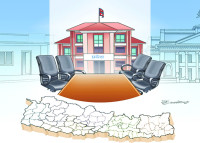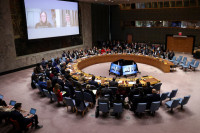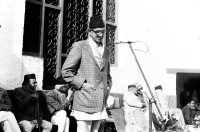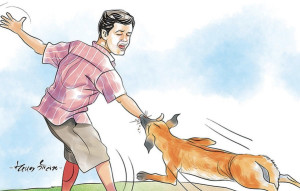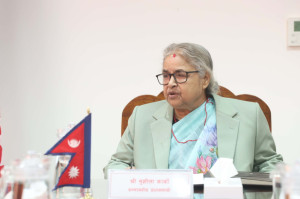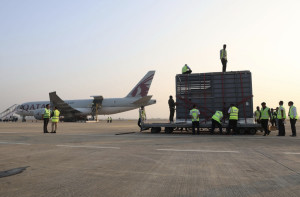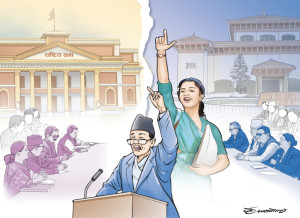Columns
Covid-19: No longer a pandemic?
There is still a lack of scientific consensus on the criterion that determines whether a pandemic is over.
Dr Sher Bahadur Pun
The Dictionary of Epidemiology defines a pandemic as “an epidemic occurring worldwide or over a wide area, crossing international boundaries and usually affecting a large number of people.” On March 11, 2020, the World Health Organization (WHO) declared SARS-CoV-2—the causative agent of Covid-19—a pandemic, after it spread to 114 countries across the globe and thousands of people lost their lives. At present, however, Covid-19 restrictions have been virtually lifted, and the deaths related to it have significantly reduced. Last week, on Friday, Nepal didn’t record any Covid-19 cases. Such occurrences raise the question: Are we still living in a pandemic?
Other pandemics
In 1918, the influenza A H1N1 virus, dubbed Spanish flu, emerged. It is considered the most severe pandemic in history with an estimated 50 million deaths worldwide. Among the four waves of the Spanish flu pandemic, the second was the deadliest, primarily killing young adults. A similar scenario, i.e., the second or delta wave of Covid-19 was found to be the most lethal wave in Nepal and mainly young adults died of it. There was no official announcement or criteria about the end of the Spanish flu pandemic. However, it was thought to be over after the virus became less deadly.
In 2009, influenza A H1N1, later designated as influenza A (H1N1) pdm09 virus, also known as Swine flu, re-emerged. It spread to 74 countries with 144 deaths, leading the WHO to declare it a pandemic. After a year, on August 10, 2010, WHO announced its end, but the virus continues to circulate as seasonal flu. At present, SARS-CoV-2 is also circulating at a low level, similar to Swine flu. SARS-CoV-2 will likely remain a seasonal infection in the coming months or years, although its seasonality is not yet clear or is yet to be determined. Preventive measures such as wearing a mask and physical distancing are no longer mandatory in public places, and compliance with hand hygiene has significantly decreased.
XBB variant
A new virus, XBB, a sub-lineage of two descendants of the Omicron variant, which first emerged in Singapore, has been spreading worldwide. The XBB virus is said to be fast-spreading, evading antibodies developed by vaccines and natural infections. Initially, many experts assumed that the infection rate, hospitalisations and deaths might increase due to it. However, no significant rise in hospitalisations and deaths has been observed. For the first time, on October 23, the government of Nepal formally announced the detection of the XBB virus from various places across the country. The Ministry of Health and Population warned about the virus's possible spread during Dashain, Tihar and Chhath. Interestingly, there was no significant increase in hospitalisations, deaths, or infections following these festivals. Vaccination against Covid-19 or natural diseases is a possible and justifiable explanation.
SARS-CoV-2, which causes Covid-19, continues to evolve. Hence, emerging new viruses are not unpredictable events. An outbreak may occur if the new virus is introduced due to mutations or hybridisation between two or more sub-variants. In such a condition, scientists usually warn (had warned after the introduction of the new XBB virus) about a possible new wave of Covid-19. Nonetheless, the outcome of the infection should be evaluated, analysed and predicted, based on before and after the arrival of vaccines, herein referred to as the pre and post-vaccination era.
The hybrid (recombinant) XBB virus (even other new viruses) could not create a deadly Covid-19 wave after its introduction in the communities. Vaccines were not widely available or accessible during the second wave; hence, hundreds of people lost their lives due to severe complications, while the number of vaccinated people increased dramatically during the third wave of Covid-19 (Omicron wave). As a result, severe complications, hospitalisations and deaths due to Covid-19 decreased significantly, compared to the second wave. That clearly shows the differences in the outcome of Covid-19 severity between the pre and post-vaccination eras.
Vaccination drive
Several developed countries have encouraged or recommended multiple booster doses of the Covid-19 vaccine for their citizens. As of December 13, 2022, Nepal has fully (a 2-dose primary series) vaccinated 76.5 percent of its population, while 27 percent received a booster dose. Despite the recent introduction of a highly transmissible hybrid XBB virus in Nepal, the rapid surge of hospitalisations and deaths was not observed, even after the biggest festivals. It clearly pointed out that the strength of the SAR-CoV-2 virus had weakened in the post-vaccination era. The global number of new Covid-19 cases and deaths have dropped sharply in recent months.
Notably, at least one-third of our hospital staff developed antibodies below the threshold protection level (as mentioned by manufacturer instructions) after being fully vaccinated (a 2-dose primary series). Nevertheless, none of us showed severe symptoms even after multiple infections from SARS-CoV-2. It shows that antibody level against Covid-19 may not be the sole indicator of the defence mechanism, or a whole story about immunity, meaning huge knowledge gaps remain regarding the protective mechanism against Covid-19.
Over the last couple of months, hospitalisations and deaths due to SARS-CoV-2 infection have decreased significantly worldwide, despite Covid-19 restrictions being virtually lifted, indicating that the “pandemic” may have been over. Thus, the time has come to reconsider or reevaluate the status of Covid-19 as a pandemic. However, there is still a lack of scientific consensus on the definition or criterion that determines a pandemic is over. That needs to be brought up in discussions.




 10.45°C Kathmandu
10.45°C Kathmandu
